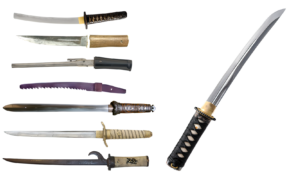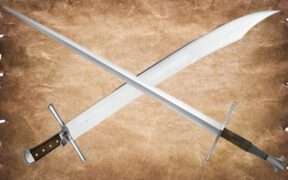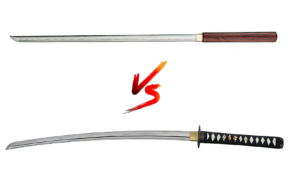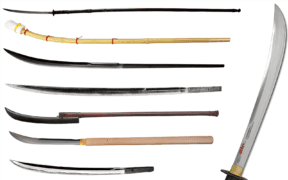Is The Tsurugi the Only Double-Edged Japanese Sword?
NO AI USED This Article has been written and edited by our team with no help of the AI
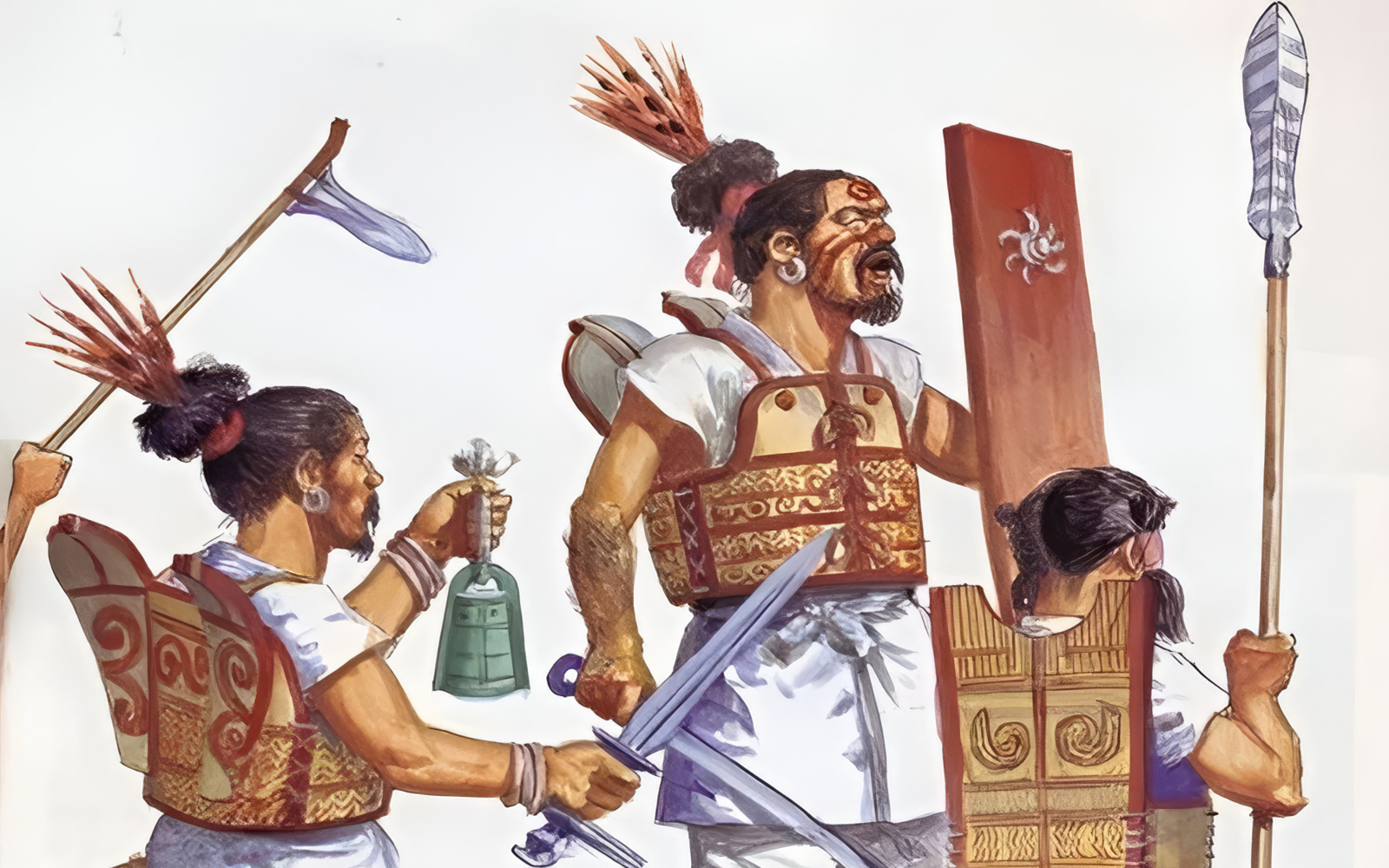
The early swords of many cultures were double-edged, and this was true of the first Japanese swords. Over time Japanese double-edged swords evolved into slightly curved single-edged weapons, like the katana and wakizashi.
In this article, we take a trip through time to examine the different types of double-edged Japanese swords, their history, characteristics, and their evolution into the swords we know today.
Double-Edged Japanese Longswords – Katana & Tachi
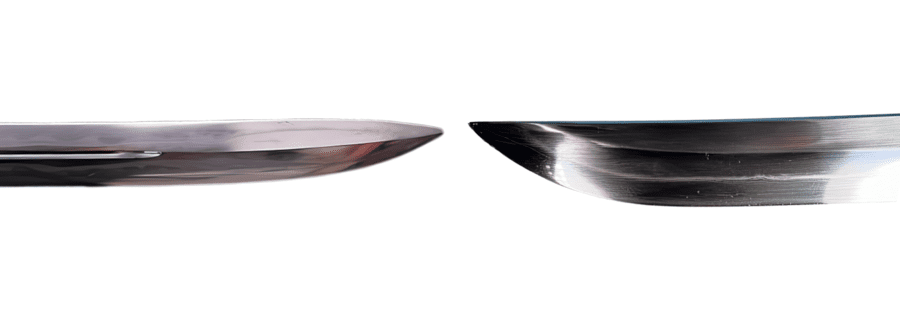
Although Japanese swords are iconic for their curved, single-edged blades, there are many examples of Japanese double-edged swords throughout history. Early examples were short and could be used alongside a shield, but they evolved longer blades.
Longer double-edged blades weren’t practical for combat. For instance, they weren’t effective against cavalry, which was used in many battles before the Sengoku Jidai (1467-1615 CE). Their reduced yet curved bevel decreases the weapon’s structural integrity and sharpness.
“The use of cavalry had long been recognized as an essential arm of an efficient fighting force”, says Stephen Turnbull, a historian specialising in Japanese military history.
Despite the general abandonment of experimental double-edged blades for combat, some remained. Here are the most popular types.
Double-Edged Katana: Kissaki-Moroha-Zukuri
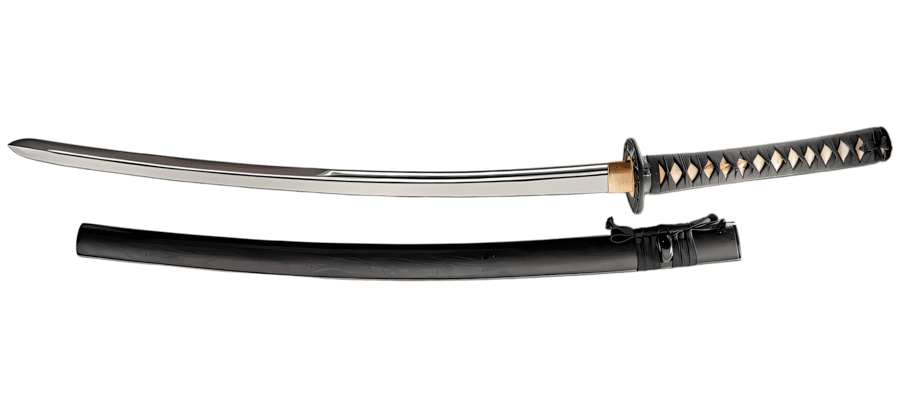
The iconic samurai katana sometimes features two sharpened edges. These are known as kissaki-moroha-zukuri katana, which means a blade with a sharpened back/spine.
These swords were created using traditional methods, which included folding high-carbon steel known as tamahagane. For this reason, they often feature traditional characteristics, including a clay-tempered hamon (temper line) and a visible grain pattern. Also, their tsuka (handle) mountings are the same as those on a regular katana.
The double-edged katana was not typically used in combat. Instead, it served a ceremonial function and represented the ancient heritage of Japan’s past and the use of double-edged weaponry at the time.
Double-Edged Tachi: Kogarasu-Maru
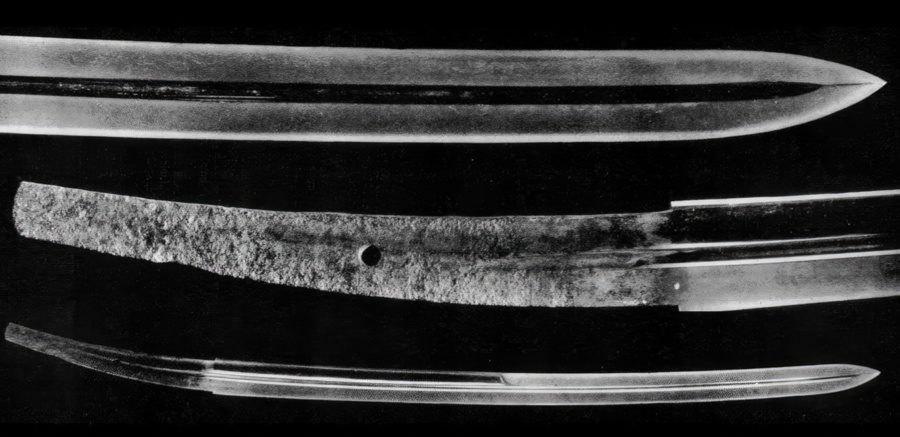
The tachi, the iconic first single-edged curved Japanese longsword, had a double-edged variant known as kogarasu-maru. It is sometimes called the “three-legged crow” blade. According to myth, its legendary creator, the swordsmith Amakuni (781-806 CE), delivered it to his emperor via a giant crow.
The double-edged tachi was an experiment in combining elements of older Chinese or Korean swords, like the tsurugi, chokuto, and warabiteto, with those of newer ones made in Heian Japan (794-1185 CE) that had a single edge and a curve.
It had a larger odachi form (or stronger tachi curvature), which is more practical for fighting on horseback, with about a 7.87-inch (20cm) segment with two sharpened edges near the tip. The blade can have iconic Japanese sword traits, but its bohi (fuller) runs through the center and ends near the tip.
Like the double-edged katana, the double-edged tachi was also mainly associated with ceremonial and heritage activities, rather than actual combat.
Tsurugi – “The” Double-Edged Japanese Sword
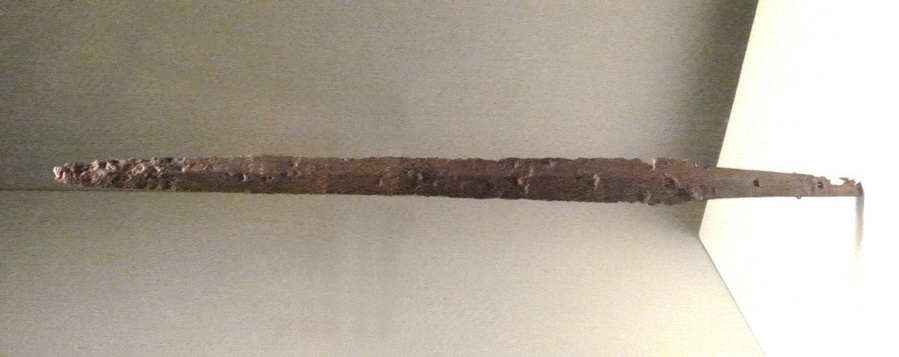
One of the first types of Japanese swords was the tsurugi, also known as ken. Like many early swords, the tsurugi has double-edged blades with a fairly acute tip.
While likely inspired by the Western-influenced Chinese jian, it could have been created simply by strengthening and elongating shorter ceremonial or utility daggers.
The tsurugi was a battle-ready short sword that was used alongside a shield in battle, long before the Japanese samurai existed. The earliest specimens date to around the 2nd century BCE, but the design could have existed even before that time.
They gradually became obsolete and were replaced by the single-edged chokuto for combat use. They continued to be used in ceremonies to pay respect to swords used in early Japanese traditions, such as the Shinto religion.
Other Double-Edged Japanese Swords
Unlike their European counterparts, for example, double-edged Japanese swords weren’t intended for practical or combat use as a primary weapon. However, some smaller sub-types existed that were. They were made either by combining the traits of single and double-edged blades or by adapting double-edged spearheads.
Like double-edged Japanese longswords, these swords mostly served a ceremonial function, but occasionally saw use in combat.
1. Warabiteto
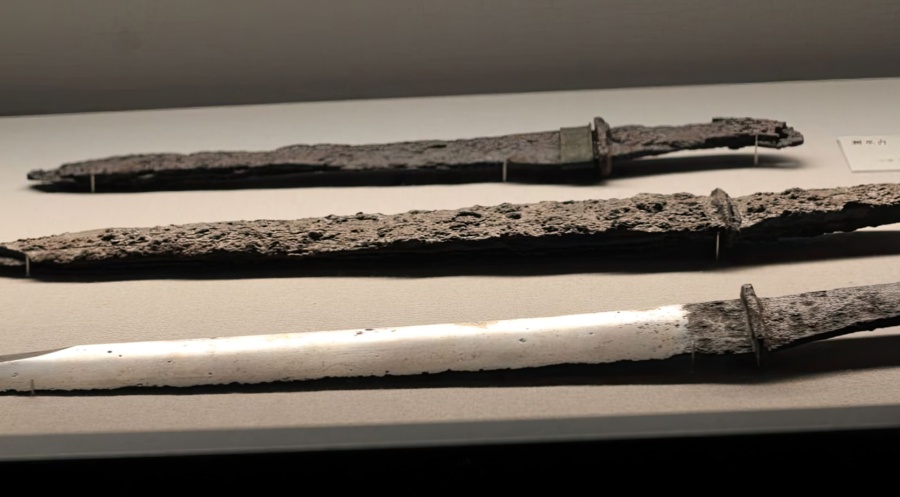
The warabiteto, sometimes called wanto, is a Japanese sword that usually has straight blades, although some have a very slight curve.
Believed to be one of Japan’s first single-edged swords to feature a soft curve, they are thought to have been inspired by early Western Chinese zhibeidao. They were often individually crafted and were easier to produce and maintain.
On average, warabiteto are fairly short, similar in length to a large tanto, but some longer ones have the dimensions of a short sword. While most surviving specimens have a single-edged blade, around 5% feature a double-edged tip.
For this reason, some experts believe these blades could have led the evolution towards curved double-edged swords, which were particularly popular among the mysterious Emishi people in the northeastern parts of Japan.
2. Yari or Ken Short Swords
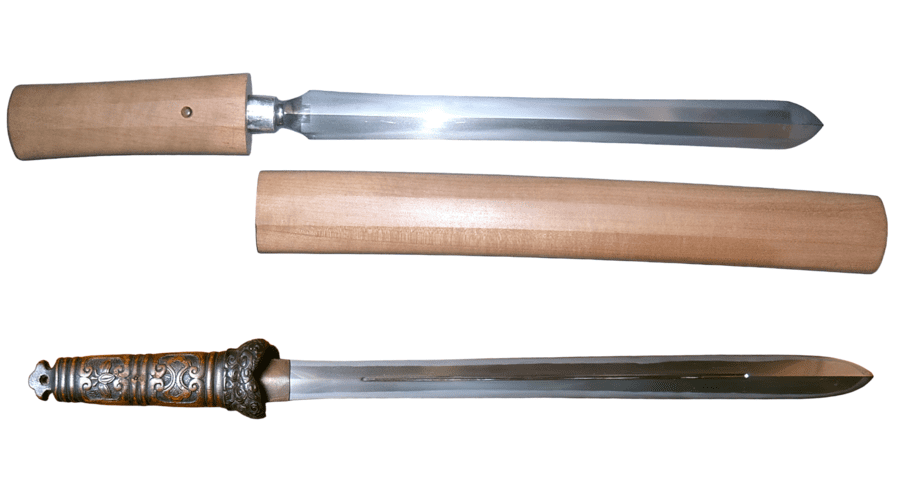
The yari is a spear and was one of the main weapons in Japanese warfare. During periods of peace, especially the Edo Period (1603-1868), they weren’t used in everyday life, often due to their length.
Often their spearheads were removed and mounted on a short tanto dagger or, in rare cases, on a wakizashi, for self-defense.
The ken tanto dagger is a ceremonial and ritualistic piece that was most often linked with Buddhism. While double-edged in design, it was rarely sharpened.
3. Gunto Artillery Sword
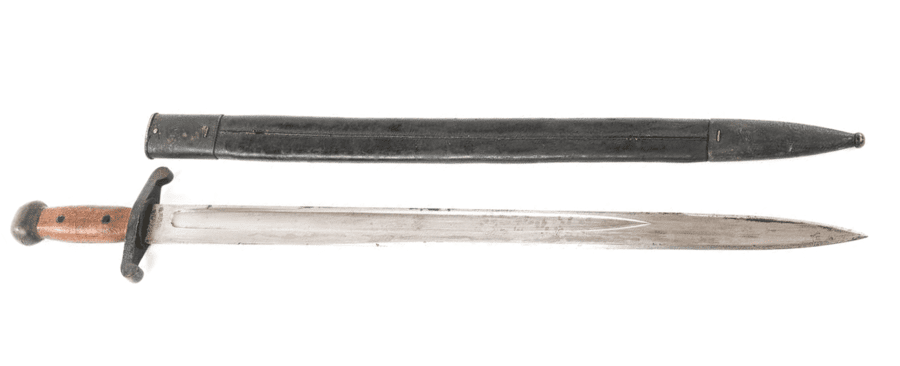
Gunto swords are Japanese military swords that existed after the fall of the Tokugawa Dynasty in 1868. They vary in design and structure with some showing the influence of foreign sword designs, while others were inspired by earlier samurai models.
Artillery swords had straight blades with double edges. These were used both in ceremonies and to symbolise rank, but were sharpened and could also be used in combat. Some types are from the period of the World Wars.
History and Evolution of Japanese Double-Edged Blades
Japanese double-edged swords belong to the jokoto (ancient swords) group and were used for combat from the 10th century BCE to around the 10th century CE. The next era, or koto (old swords) mostly featured ceremonial double-edged blades.
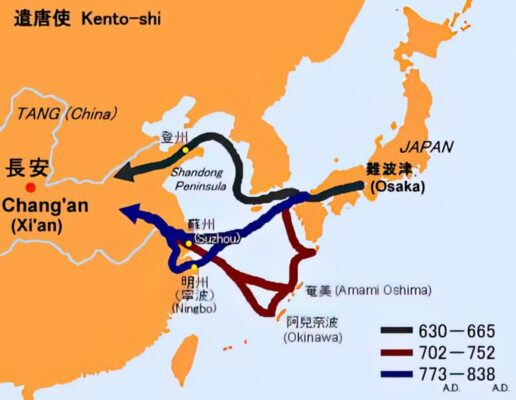
Double-edged swords in Japan were influenced by the Chinese jian. The earliest example of a bronze sword is a jian from the 9th century BCE. This tradition continued with iron double-edged swords. An example is the Tōdaijiyama Sword from the 2nd century CE, also of Chinese origin.
“…methods of manufacture and transformations of bronze and iron came to Japan from mainland China via the Korean Peninsula”, says Joanna Katarzyna Puchalska, an author specialising in the evolution of Japanese swords.
Double-edged Japanese swords were the result of successful diplomatic interactions and the spread of Chinese influence. The first double-edged Japanese sword was the tsurugi, which was replaced by the Chinese-influenced single-edged dao known as chokuto. Today this blade is known as ninjato and is linked with Holywood-inspired ninja.
With the fall of the Tang Dynasty (618 – 907 CE), Japan’s diplomatic missions to and trade with China crumbled. This led to the creation of unique Japanese single-edged curved swords such as the tachi and the katana. These were easier to use and much more efficient within Japanese styles of combat.
